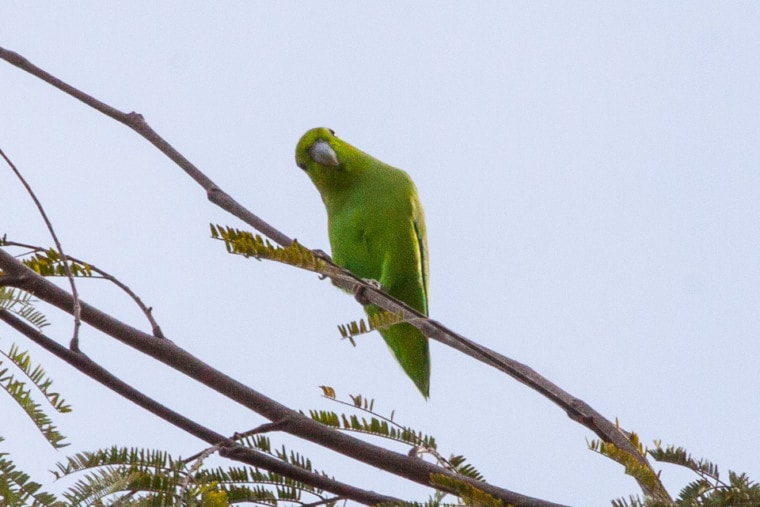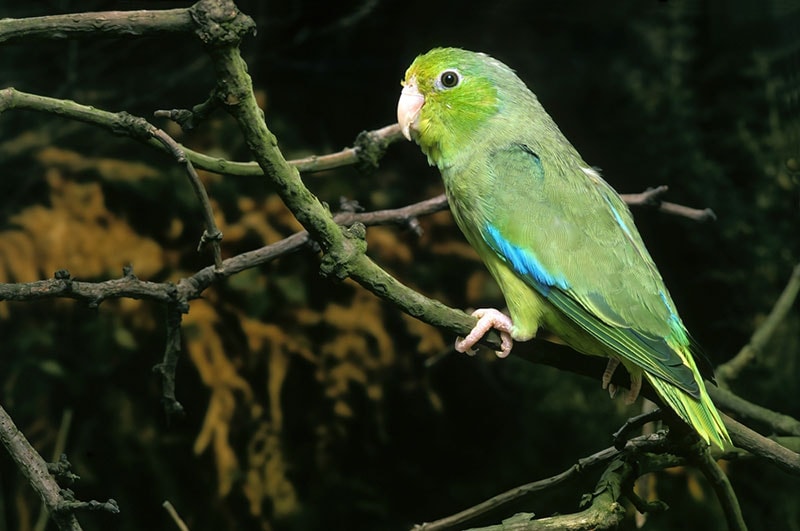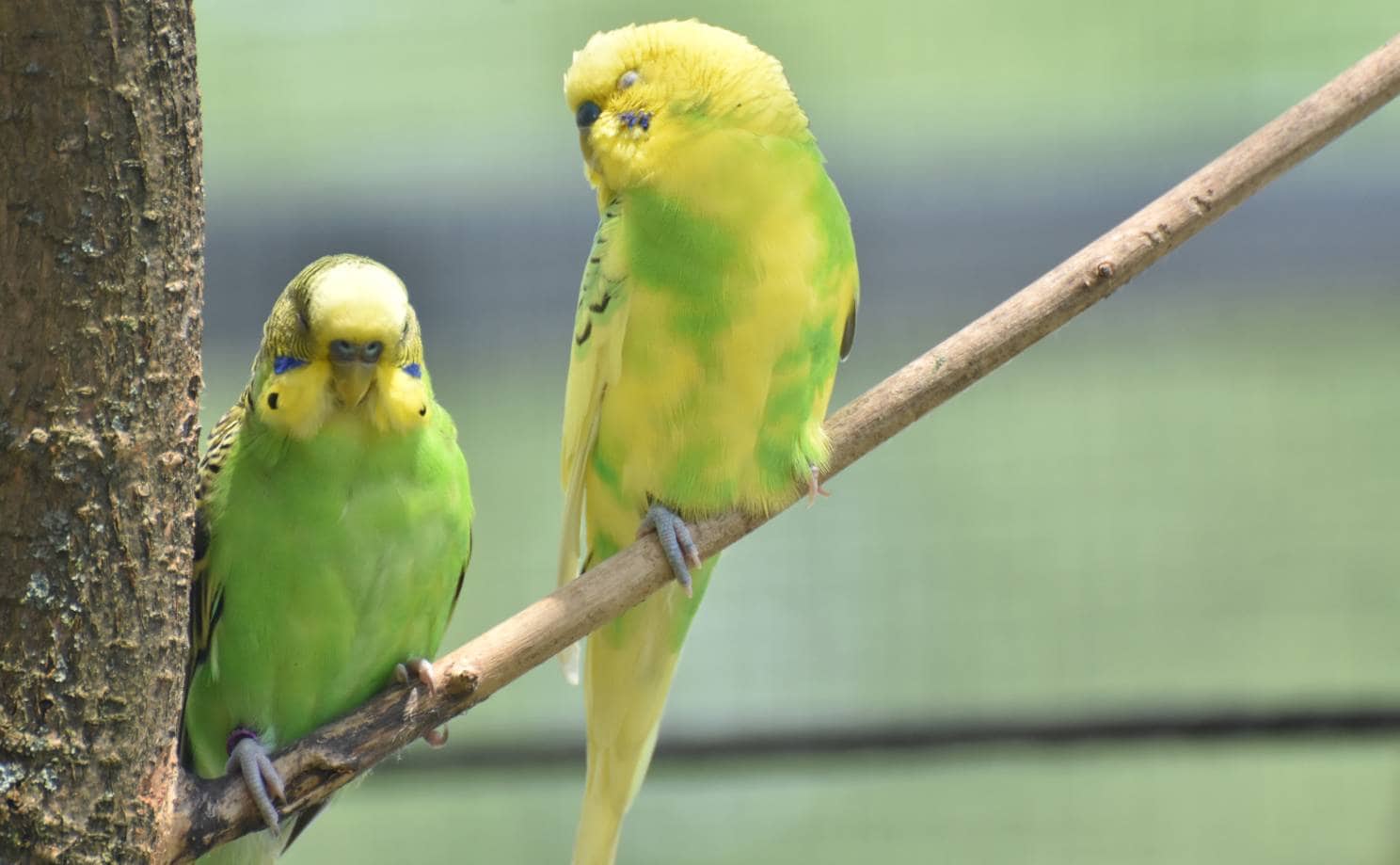
These tiny parrots hail from Mexico, of course! The Mexican parrotlet is sometimes mistaken for a green parakeet, but these birds are actually smaller than the parakeet and have different personalities.
The Mexican parrotlet is also called the blue-rumped and the turquoise-rumped parrotlet. Unfortunately, they are part of Mexico’s illegal bird trade industry—as many as 8,000 are caught illegally every year.
So, if you’re interested in learning more about this beautiful pint-sized parrot, you’ve come to the right place. Read on for more information!

Species Overview
| Common Names: | Mexican parrotlet, blue-rumped parrotlet, turquoise-rumped parrotlet |
| Scientific Name: | Forpus cyanopygius |
| Adult Size: | 5 inches |
| Life Expectancy: | 20 to 25+ years |
Origin and History

The Mexican parrotlet comes from the western region of Mexico—from Colima up to Sinaloa and Durango. They are found in plantations, forests, and open spaces and in tall trees in and around towns and villages, particularly around fig trees.
BirdLife International and the IUCN have put the Mexican parrotlet on the Near Threatened Red List due to the illegal parrot trade. Their population in the wild is decreasing, with less than 50,000 mature Mexican parrotlets found in their natural habitat.
Back in 1995, it was estimated that there were 208,000 Mexican parrotlets, so that’s a decrease of 158,000 birds in 26 years. The decrease in their numbers is primarily through the illegal parrot trade and the destruction of their habitat.
Temperament & Behavior
The Mexican parrotlet is particularly active late in the afternoon and first thing in the morning. They form flocks of 10 birds up to 100, sometimes with orange-fronted conures, and spend time eating and flying through fig trees. They spend time searching for food and take seeds off the ground.
They are very outgoing and social birds both in the wild and in captivity. The Mexican parrotlet is a feisty little bird that can be affectionate and quite trainable due to their intelligence and need for stimulation. They are very active parrots that require the opportunity to fly as often as possible for their well-being and general health.
Calls
They aren’t talkers as much as larger parrots, but they can be trained to mimic certain sounds. In the wild, they sometimes squawk while feeding and will call out a squeaky kind of noise while in flight or while perched.
While the Mexican parrotlet’s calls can be heard over a sizeable distance, they aren’t overly “screechy” like other parrots.

Mexican Parrotlet Colors and Markings

The Mexican parrotlet is an overall green color. They have a blue or turquoise-colored rump, back, and underwings. The main difference between the males and the females is the females have yellow-green markings, whereas the males have blue.
Since they spend so much of their time in the trees, they can be difficult to spot because they look about the same color and size as a fig leaf.
- See Also: Green-Rumped Parrotlet
Habitat
Mexican parrotlets are not migratory birds, but they will move around a lot in search of their favorite food. For this reason, the numbers of the wild Mexican parrotlet fluctuate a fair bit, and it has proven challenging to track their numbers in any given area.
They prefer tropical or subtropical dry scrublands, open grasslands with some trees, deciduous forests, plantations, woodlands next to water, and forests that have been heavily degraded.
Social Groups
The Mexican parrotlet does fly with small and large flocks that can be made up of family groups and pairs. While flying in a flock, they fly in tight formations and quite swiftly.

Breeding
The breeding season generally occurs between May and July, and they are able to breed in a colony. The female’s beak will start to turn silvery-blue to signal that she is receptive to breeding. They average three or more eggs in a clutch, and incubation typically lasts about 19 days, and the fledgling appears after about 4 to 5 weeks.
Diet
The diet of the Mexican parrotlet in the wild consists of figs (which are half-ripe or ripe), grass seeds, berries, and seeds. They tend to forage for food in trees, shrubs, and on the ground.
Mexican Parrotlets as Pets
Mexican Parrotlets have been kept as pets over the years and do make great pets due to their charming personalities. They can act like little goofballs, and that combined with their energy and affectionate side has made them a sought-after species of parrotlet.
However, due to the illegal trading problem and since they are on the IUCN’s Red List as Near Threatened, these birds are no longer being imported into other countries. It’s illegal to import the Mexican parrotlet from Mexico, and they are only allowed to be collected from the wild for scientific reasons.
This species of parrotlet does not appear to be available for purchase at this time, and there don’t seem to be any breeders of the Mexican parrotlet, at least in North America. They do make great pets if you can find one, but you need to be sure that you obtain one through a reputable breeder and not through illegal means. It’s because of the illegal trade that the number of parrots in the wild is declining.
Final Thoughts
The Mexican parrotlet is a beautiful and tiny bird that would make an amazing addition to your family—if you can find one. The best parrots to bring into your home are the ones that have been hand-raised and that are healthy and well-adjusted.
These birds are certainly rare in captivity, so it will take a great deal of searching for you to find one legally. Hopefully, more breeders will take an interest in beginning a breeding program so more people can enjoy these pretty and unique little parrots.
Featured Image Credit: Ron Knight, Wikimedia Commons, CC BY 2.0








